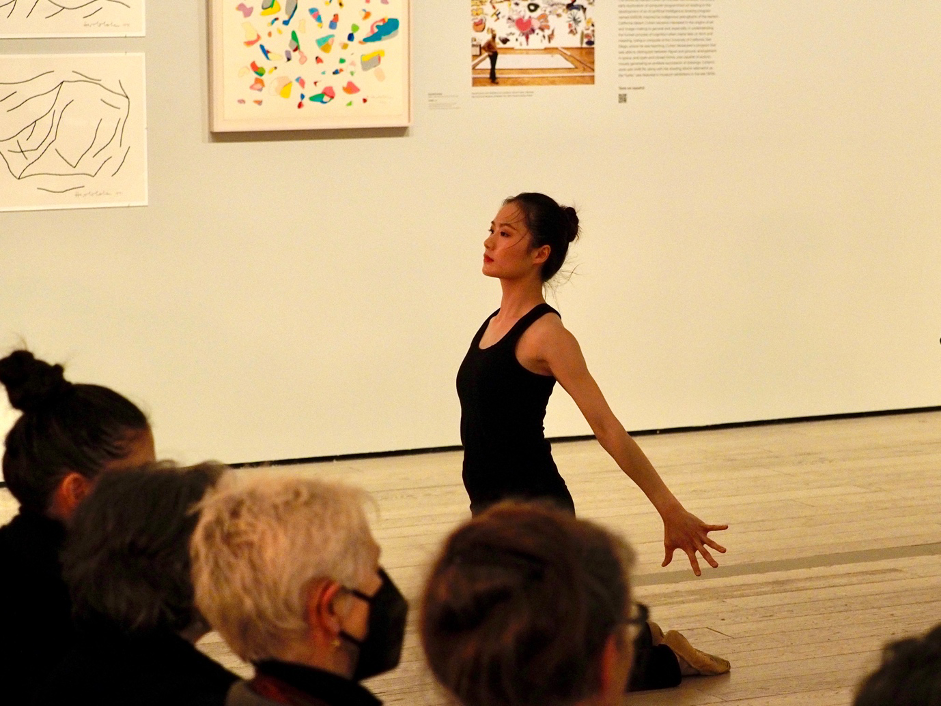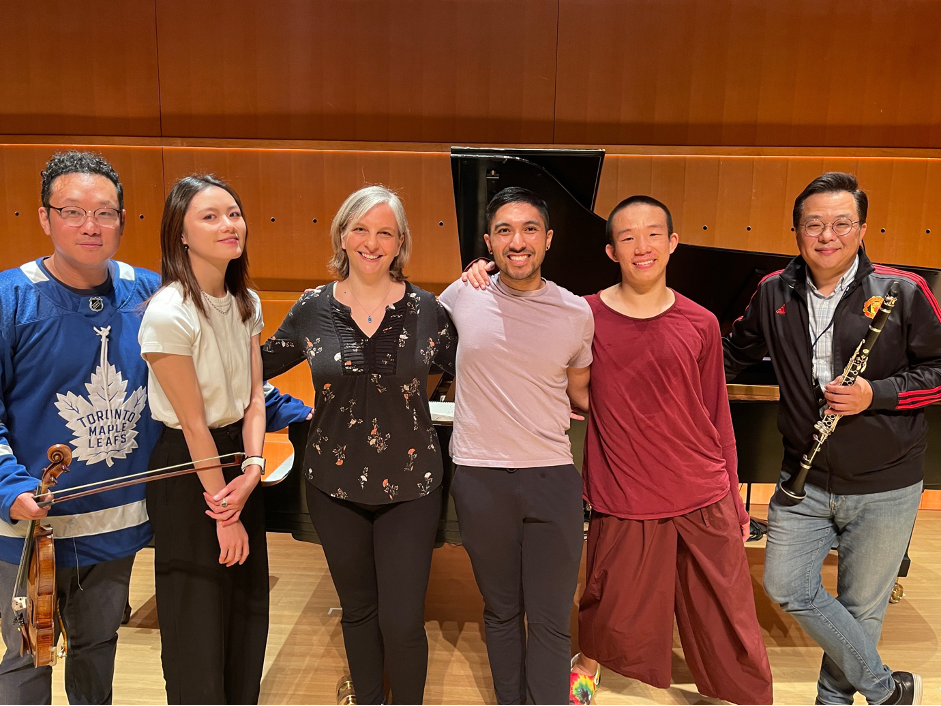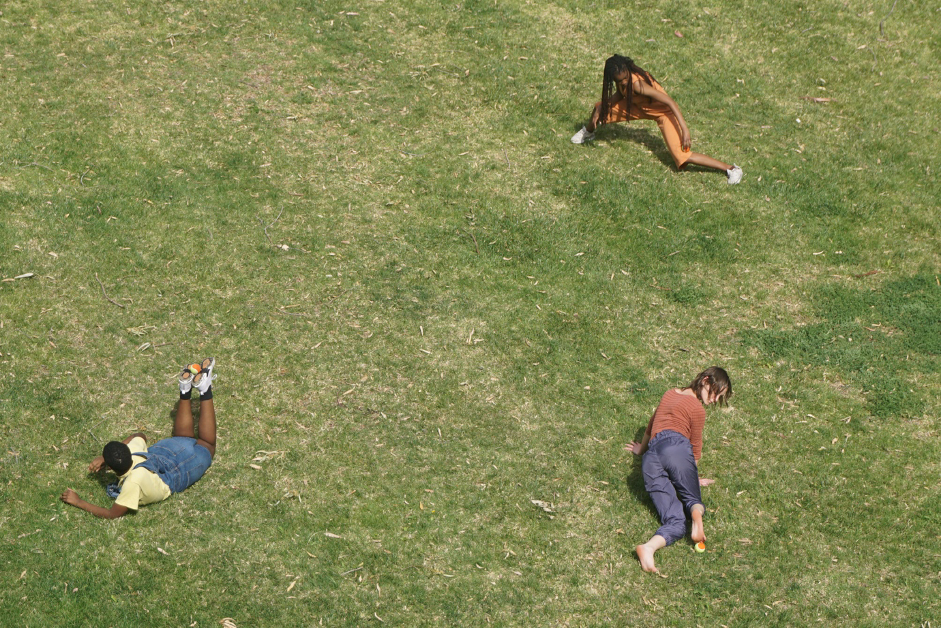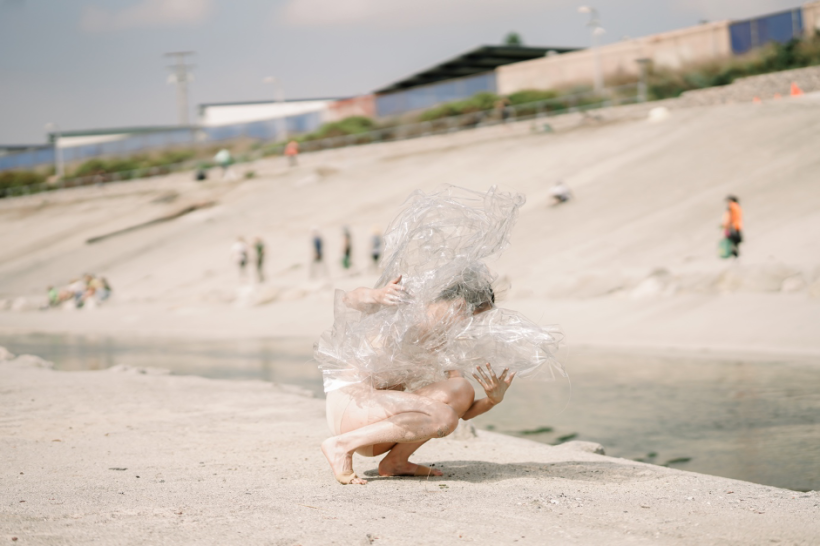In the fluid and ever-transforming realm of contemporary art, one choreographer’s journey stands out as a symphony of movement and meaning. Zhihan Yang, with her balletic dialogue, orchestrates performances that transcend the dance floor, echoing into the vast expanses of cultural narrative and artistic innovation.
Nestled at the heart of this convergence is Yang—an embodiment of artistry and intellectual prowess in the world of dance. With a robust educational background and an expansive professional tapestry, she bridges worlds, connecting continents and cultures through the universal language of dance. Her choreographic eloquence, steeped in academic rigor, is not merely decorative but serves as the foundational pillar of her creative identity.
Yang’s collaborative ventures with the Pacific Symphony Orchestra and the Los Angeles Museum of Art mark her not only as an artist of note but as a choreographer with significant influence. These are not just performances; they are sophisticated dialogues across mediums, propelled by Yang’s innate grasp of movement as narrative and communal experience.
Her work embodies the balance between the avant-garde and the approachable, particularly evident in her contributions to Heidi Duckler Dance’s “Metam.” Here, Yang’s choreography speaks a profound yet universally comprehensible language, illustrating that artistry can bridge the gap between exclusive circles and the broader audience.
As we delve further into Zhihan Yang’s artistic odyssey, we encounter a visionary whose gestures are deeply rooted in the spectrum of human emotion, and whose strategic foresight is etched with the precision of a master craftsperson. In the following conversation, Yang opens up about the intricacies of her craft, the relentless pursuit of authenticity in an art form shadowed by commercial pressures, and the defining moments of a career marked by applause and acknowledgment.
Join us in unveiling the tapestry that is Zhihan Yang’s narrative—a narrative that deftly weaves ambition, insight, and the timeless eloquence of dance into its very fibers. We promise an immersive journey into the experiences of an artist whose work resonates with the authenticity of expression, all while maintaining a keen eye on the evolving frontier of artistic innovation.
Tell us, Zhihan, what initially sparked your collaborations with prestigious organizations like the Pacific Symphony Orchestra and the Los Angeles Museum of Art? Was it a shared vision, a chance encounter, or something else?
Upon my graduation, I found myself amidst unfamiliarity and the unknown, grappling with the challenge of uncovering opportunities for work and collaboration. It was during this time that Ellen Davis, the daughter of Horwitz and an accomplished professional dancer and choreographer, was seeking collaborators to bring life to choreography inspired by the artist’s Sonakinatography, specifically Composition XVI, Number III (1981) and Composition III (1996).
I put forward my resume and was selected to partake in a competitive audition. Fortunately, I was offered the chance to perform in the production—a remarkable honor that allowed me to collaborate with such esteemed artists and showcase my talents at a prestigious venue. Subsequently, I joined the creative team at Yaya Dance Academy, an institution with a longstanding partnership with the Pacific Symphony. My role there immersed me in a creative process that interwoven non-traditional choreography with classical arrangements—a challenging yet rewarding endeavor.
These collaborative experiences emerged from a blend of shared artistic vision and active networking. Both I and the organizations I’ve worked with hold a firm belief that art, in all its forms, should serve as a powerful and transformative experience for audiences. Our combined commitment to the advancement of dance, music, and visual arts was evident in our projects.
Networking and professional relationships have been pivotal; I continuously seek connections with industry professionals, attend key events, and showcase my work across diverse platforms. My collaborations with these esteemed organizations, fueled by a confluence of artistic alignment, strategic networking, and opportunity, have been instrumental. I am immensely thankful for these partnerships, as they have not only allowed me to craft unique and impactful performances but have also facilitated a journey of self-discovery and learning within the realm of creative expression.

Can you take us through your collaborative process with Heidi Duckler Dance, particularly for the environmental piece “Metam” (2023)? How do both parties contribute and fuse their artistic languages?
The Ebb & Flow Community Arts Festival, presented by Heidi Duckler Dance, is a complimentary, family-oriented festival that delves into the themes of climate change, nature, humanity, and health through the media of dance, visual arts, music, and technology. This edition of the festival sees HDD collaborating with Ballona Creek Renaissance (BCR), a non-profit organization in Culver City committed to the restoration of Ballona Creek and its watershed. This collaboration coincides with Heal the Bay’s 2023 Coastal Cleanup Day, affording participants a unique opportunity to engage with the performances while contributing to the betterment of the local environment.
For this occasion, I premiered “Metam,” a dynamic live performance that fuses choreography with installation art, embodying both physicality and auditory experience. Drawing inspiration from the transformative journey of cicadas, it is an allegory for the ecological equilibrium and nature’s inherent capacity for renewal, as well as the harmonious interaction between humanity and the environment. This performance invites the audience to reconnect with the increasingly overlooked natural world, instilling a sense of wonder and raising consciousness about the significance of nature, life, and preservation.
My work harmonizes with the festival’s expressive agenda, seeking to convey the vitality of life in its manifold manifestations more vividly and intimately to the viewers. The theme of metamorphosis is artistically unfolded through the design of the installation which uses clothing as a metaphor, presenting an intricate, three-dimensional exoskeleton crafted from lightweight metals and recyclable materials. This structure symbolizes metamorphosis and regeneration, its form and substance engaging seamlessly with the choreography to produce distinctive textures and visual impressions.
The choreography not only complements the installation’s layered, shell-like structures but also represents life’s various stages, encapsulating the phases of dormancy and transformation. The sound design is conceived to harmonize with the natural ambiance, while the aesthetic elements celebrate life’s cyclical nature and rebirth. The performance’s locale offers an immersive, multifaceted viewing experience, transporting the audience into a boundless, imaginative sphere that promises to leave an enduring impact.
Heidi Duckler, the founder and artistic director of HDD, commented, “It requires a bold artist to craft a work in such a capricious setting. A creek, with its perpetual flow and change, gathering debris along its path, presents a unique backdrop. Our role as artists is to prompt the audience to perceive, to empathize, and to drive transformation.” The event offers a moment of reflection on our ongoing connection with the fluid communities we inhabit, the landscapes we reside within, and how we might become catalysts for a more pristine future.
Working with such esteemed organizations must come with its unique set of challenges and rewards. Can you share an anecdote from one such collaboration that was particularly memorable for you?
One of my most indelible experiences with the Pacific Symphony involved a rehearsal with a dancer and three mannequins that had to be synchronized harmoniously, despite the constraints of a notably small stage. We were fine-tuning a performance that demanded impeccable timing between the choreography and the music, and the stakes were high. During one of our final run-throughs, we encountered an issue with the mannequins—they unexpectedly collapsed on stage during a critical segment of the act. This unforeseen mishap momentarily plunged the diligently prepared dancers and musicians into disarray.
However, it was within this unforeseen challenge that a remarkable event unfolded. Despite the disruption, one performer continued to execute the choreography flawlessly even after a mannequin fell, propelling the performance forward with heightened drama and perfect synchronization with the music. Their adaptability and resilience shone through as they navigated the stage, dancing with astounding precision.
As the choreographer, I was profoundly impressed by the dancers’ display of resilience and professionalism. This incident mirrored the solid physical preparation and the nonverbal rapport we had nurtured throughout our collaboration. We pressed on despite the obstacles, and the actual show culminated in a resounding triumph. This episode affirmed the formidable impact of collaboration and the strength of teamwork.
With organizations like the Los Angeles Museum of Art, the intersection of visual arts and dance becomes more prominent. How do you approach integrating dance with other forms of art in such collaborations?
Entering the planning phase with a clear grasp of the partner organization’s artistic vision and objectives is crucial. This ensures that the choreography and performance resonate with the overarching theme of the exhibition. In the lead-up to the event, we engage in regular and open online discussions with curators, artists, and fellow collaborators. This intensive collaboration and the exchange of ideas, coupled with consistent updates on each group’s developments, facilitate the crafting of choreography that melds seamlessly with the setting.
In parallel, extensive research into the art and historical context of the visual works involved enriches this process. This knowledge and the accompanying visuals fuel the inspiration for my choreography and performance, prompting contemplation on how to weave movement with the visual elements like colors, geometric shapes, and the broader intentions, themes, and concepts of the art pieces.
Once we transition to live rehearsals within the museum spaces and are assigned specific areas within the exhibit, we endeavor to make the body an extension of the art, allowing the environment itself to become an integral part of the artistic tableau.

Why do you believe interdisciplinary collaborations, such as working with a symphony orchestra, are vital for the evolution of contemporary dance?
Collaborating with other art forms, such as the symphony, injects new life and innovation into my dance creations. It compels choreographers and dancers to transcend conventional boundaries, inspiring novel approaches within both structured and unstructured environments. These partnerships offer a chance to converge with artists from various disciplines, each bringing their unique perspectives and creative methodologies.
Music, visual arts, and video are steeped in their distinct histories, emotions, and narratives. The confluence of these myriad ideas, techniques, and sentiments lends fresh viewpoints to the realm of dance. Embracing these elements within my contemplative process has enabled me to tap into a more extensive array of influences and broaden my creative horizon.
Indeed, interdisciplinary collaborations also play an educational role, enlightening the public about the art of dance and its cultural significance. Engagements with other artistic disciplines often draw more eclectic audiences—those who might not typically seek out dance could be drawn to a performance for its musical or visual art components, thereby extending the reach of contemporary dance. In an era characterized by diverse tastes and fleeting attention spans, such collaborative efforts can render dance more pertinent and attractive to modern audiences.
Concurrently, interdisciplinary work crafts an integrated aesthetic experience that engages multiple senses at once. While a traditional symphony hall experience is predominantly auditory, the inclusion of dance offers a tangible visuality, allowing audiences to viscerally experience the tension, exertion, or raw expression on stage. This multisensory encounter invites the audience to deeply reflect on the emotions and concepts embodied in the performance.
How have these collaborations with diverse organizations influenced or expanded your own artistic vision and choreographic style?
Adapting to the unique challenges presented by varying performance environments can spark a new kind of creativity. The absence of traditional dance amenities like solid ballet bars, marley floors, expansive mirrors, or even controlled temperatures compels a shift in perspective. Such conditions have enriched my experiences, enhancing my ability to integrate choreography more closely with different surroundings. When the setting does not cater to my preferences, I find myself turning to elements that are often overlooked in everyday life, thereby expanding the expressive vocabulary of my compositions.
Live music, for instance, necessitates a certain level of adaptability from choreographers and dancers, as we must align our movements with the live rhythms and intricacies of the musicians’ performance. This can lead to the development of new choreographic elements that wouldn’t have emerged within the confines of a rehearsal studio. During a live session with the Pacific Symphony Orchestra, for example, we conceived new choreographic variations in response to the musicians’ feedback and spontaneous alterations—a process that could not have been replicated in a standard rehearsal environment.
Also, the collaborative process exposes us to artists from diverse cultural milieus. Engaging in dialogues about our creative processes has deepened my appreciation for various cultures, their traditions, and narratives. Understanding the “why” and “how” of presentation has become a crucial component of my artistic narrative. Facing unfamiliarity within this process encourages experimentation and the embrace of creative risks—precious opportunities for an artist to delve into and refine their personal style.
Are there any specific organizations or artists you haven’t worked with yet but are keen to collaborate with in the future? If so, why?
Should the opportunity arise, I am eager to choreograph performances for community venues—places like hospitals, healthcare centers, and correctional facilities. Dance has often been relegated to the realm of “useless art,” particularly in the face of tangible, devastating natural disasters, where it appears powerless. However, it is precisely in times of profound difficulty that I believe dance can offer a measure of solace to the soul.
Dance has the potential to act as a moderating force, serving both as a form and a medium through which the body and mind can open up, fostering a climate of openness and tolerance. The performances in such settings provoke contemplation: could they serve as conduits, bridging the gap between the community and institutional environments, thereby nurturing understanding and empathy? Might they craft a shared sense of experience and purpose, and have the power to dismantle and transcend the boundaries of stereotypes? These questions drive my passion for bringing dance into unconventional spaces, where its impact can be profoundly humanizing and its expressive power can touch lives in unexpected ways.

For emerging dancers and choreographers aspiring to collaborate with top-tier organizations like you have, what advice would you offer to them about building and nurturing these partnerships?
The allure and inspiration that dance holds for me transcend the mere acts of physicality or movement. The sources of its inspiration are as manifold and intricate as life itself, encompassing expression, culture, a celebration of aesthetic variety, and the acknowledgement of each individual’s existence.
On a personal level, reflecting on my journey from the initial stages of dance to my current graduate studies, I believe that the most vital step is learning to engage in dialogue with oneself. Every artist must intimately understand their own passions and drives to produce art that is both meaningful and authentic. At this moment in my academic pursuit, the emphasis is on experimentation and the willingness to embrace risks. The mantra is to persist in trying and to accept mistakes as an integral part of the learning curve.
For emerging choreographers, broadening one’s social networks and establishing connections can be greatly facilitated by utilizing an artistic webpage to introduce oneself to a larger artistic community. Networking is pivotal, often leading to expanded opportunities for growth and creative inquiry. As a choreographer, actively seeking collaboration with diverse organizations not only represents a chance for personal enrichment and professional advancement but also promotes an expansive network. It sustains a perpetual cycle of self-exploration and artistic maturation.
Laila Azzahra is a professional writer and blogger that loves to write about technology, business, entertainment, science, and health.
